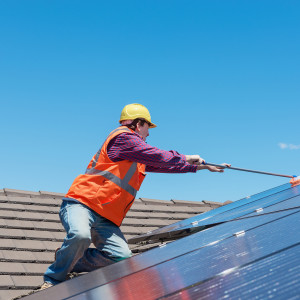“Full speed ahead” is what everyone seems to be saying about solar energy right now. From Hillary Clinton’s presidential energy blueprint to America’s general appetite to go green and, of course, President Obama’s recently released Clean Power Plan to achieve a more efficient power sector, a cleaner energy future where renewables such as solar have a large role to play is now a common goal.
At the same time, there is another issue that is similarly dominating the national discussion: income inequality and fairness.
What many may not realize is that these two issues are inextricably linked. Clearer skies and a carbon-free energy future are definite priorities, but we must ensure that the transition occurs in a way that treats all Americans — regardless of class, race or income — equally.
Unfortunately, this is currently not the case. For example, there are about 645,000 homes and businesses with rooftop solar panels in America. Of these, less than 5 percent are households earning less than $40,000, according to the George Washington University Solar Institute. And, according to the software provider Opower, the typical solar home is 34 percent larger than the typical non-solar home. Not to mention, rooftop solar systems can cost upward of $20,000.
The implications of this are clear: right now, solar power is pitting the “haves” against the “have nots.” Considering that 40 percent of families have incomes under $40,000, and are disproportionately minorities, we must do everything we can to ensure that no one is left out of the green energy revolution.
There are already some attempts under way to correct this imbalance. President Obama recently announced an initiative to make solar power more accessible for lower-income Americans by tripling the capacity of solar and other renewable energy systems it installs in federally-subsidized housing by 2020, as well as helping those who rent homes gain access to solar.
So, while a step in the right direction, there is still a lot more work to be done. Certain subsidies and tax policies are exacerbating the inequity of green energy sources and need to be updated. One of these is a policy called net metering, which affects the way that families with rooftop solar panels are compensated for the energy that they produce.
Essentially, these users skip out on the cost of maintaining the electric grid and the standby generation they need when the sun is not shining. On top of it, other utility customers, including those with lower incomes, pay these solar users a rate that is much higher than the value of the energy they produce, often more than they would if the utility just bought the energy on the market.
This may not seem like a big deal, but rich or poor, black or white, you’re using the electric grid. So net metering ends up amounting to a hidden fee that’s imposed on everyone else who doesn’t have rooftop solar panels.
And, considering that those without rooftop solar panels are already underserved, we’re perpetuating the economic hardship that these families face by asking them to pay for these fancy systems for the rich. Many of these families already have to choose whether to heat their home or pay for their next grocery store trip. We can’t go full-throttle on green energy at the expense of the poor.
Sustainability and clean air are laudable goals and we have every reason to work toward them. As part of this, regulators, policymakers and industry will no doubt be working feverishly to make the kinds of changes that the Clean Power Plan calls for. But in the midst of this excitement, we simply cannot lose sight of struggling families. A good place to start would be to fix the policy of net metering to allow all energy users to have their day in the sun.

